Jeongjae Head House / 정재종택
.0M 2025-08-12
경상북도 안동시 임동면 경동로 2661-8
+82-10-8590-0625
Boasting more than 300 years of tradition, Jeongjae Traditional House is the head house of Ryu Chi-myeong (pen-name: Jeongjae), who inherited the study of Togye Yi Hwang (1501-1570), one of the two most prominent Korean Confucian scholars of Joseon. The old house features the characteristic construction elements of a Joseon hanok, including the stylobate, wooden pillars, toenmaru (the narrow wooden porch running along the outside of the building), tiled roof, and other structures, and commands an open view of Imha Lake. The house was originally built by Ryu Gwan-hyeon, the great-great-grandfather of Ryu Chi-myeong, in 1735 (the 11th year of the reign of King Yeongjo of Joseon) in the village of Handeul in Imdong-myeon, Andong-si, Gyeongsangbuk-do, but it was relocated to the foot of Guamsan Mountain in 1987 when Imha Dam was built and the surrounding area was submerged as a result. The house consists of the daemunchae (gate building), jeongchim (a ‘ㅁ’-shaped house with a tiled roof), haengnangchae (servants’ quarters), a shrine, and a pavilion. The sarangchae (men’s quarters) is clearly visible, while the anchae (women’s quarters) is concealed within the house. The sarangchae has a sarangmaru (wooden floor), a large sarangbang room, a small sarangbang room, and there is a small maru between the two rooms. The buildings of the sarangchae and anchae are clearly divided into segregated spaces for men and women according to Confucian tradition. The anchae has a daecheongmaru (large wooden floor) in the middle; a main room, kitchen, and toilet on the right; and a numaru (upper floor) and sangbang (upper room) on the left. The small side door of the main gate links to the door by which to enter the anchae, which has a small vegetable garden. Manujeong Pavilion (Gyeongsangbuk-do Cultural Heritage Material No. 37) is a half-hipped roof building with single-layered eaves located on the left side of the house outside the main gate. It is the place where Ryu Chi-myeong used to teach his students, and consists of a large maru and a guest room. The pavilion is also surrounded by the beautiful scenery of Imha Lake, mountains, and chestnut trees. Jeongjae Traditional House provides two special experience programs: Making Songhwaju, which is the Ryu family’s home-brewed liquor (15 to 18 degrees) made with rice, glutinous rice, yeast, pine needles, and chrysanthemums, led by the owner’s wife (Intangible Cultural Asset No. 20); and Making Tarak, which is a fermented milk drink that has been made by the Ryu’s family for some 500 years. As the recipe for making Tarak is relatively simple, and uses yeast that is usually used to make raw rice wine like Makgeolli, people can easily make it at home. The house also runs a traditional music program designed to show participants how to play the gayageum (Korean zither with twelve strings) and sing Korean folk songs, and stages small concerts.
Suaedang / 안동 수애당
935.6M 2025-08-12
1714-11, Sugogyonggye-ro Imdong-myeon, Andong-si, Gyeongsangbuk-do
+82-54-822-6661
'Suaedang Traditional House was built by Ryu Jin-geol, also known by his pen-name of Suae, in 1939. This hanok-style house consists of three buildings that measure 29-kan (a traditional measurement that corresponds to the space between two columns) in total.
The main room, or jeongchim (7-kan at front and 2-kan at sides), has a half-hipped roof, and forms a‘ㄱ’-shape with the storeroom (10-kan at front), which also has a half-hipped roof. Originally located at 612 Sugok-dong, Andong-si, the house was relocated from a slight slope to a flat piece of land due to the construction of Imha Dam in 1987. Consequently, the Jeongchim was rebuilt at a lower level than before.
The Suaedang was renovated by modernizing the old-style facilities including the kitchen, toilets, and washroom without changing their external features, while the rooms and daecheongmaru (main floored room) were decorated with red clay and natural paint. Suaedang, with its beautiful panoramic view of the lake, was designated as Gyeongsangbuk-do Cultural Property No. 56.
Oryuheon House / 오류헌
6.2Km 2025-08-12
18-15, Gireumaje-gil, Andong-si, Gyeongsangbuk-do
Oryuheon House, located near Imhaho Lake in Andong, Gyeongsangbuk-do, offers a chance to stay in a historic house from the Joseon period. The house, also known as Mogwa House, was built by Kim Won-jung, the third son of Sukjong-era rector of the National Academy Kim Bang-geol, when he formed a family of his own in 1678. It was designated as the National Folk Cultural Heritage No. 184. The door’s wooden frame and the open floor space exemplify the beauty of the literati house of the Joseon period, while the sarangchae (men’s quarters) and daemunchae (gate quarters) showcase the sophisticated architecture of the era. Anchae (women’s quarters) retains its original appearance, while the sarangchae was rebuilt in 1920. The construction of the Imha Dam in 1990 resulted in the house’s relocation to its present location.
The owner of the house resides in anchae and sarangchae. Guests have access to a space that includes a 2-kan room, which can accommodate up to 4, an open floor space, and a bathroom. Cooking is prohibited in the house, but guests can make use of a grill located on a small yard reserved for the guests. Korean-style breakfast, including menus like chicken porridge or lotus leaf rice, are offered free of charge in the morning. Nearby sights include the water sports activities in Imhaho Lake, Manhyujeong Pavilion, Hahoe Village, and Dosanseowon Confucian Academy.
Le Village d’Art de Jirye (지례예술촌)
6.3Km 2024-07-08
769, Bakgok-ri, Imdong-myeon, Andong-si, Gyeongsangbuk-do
+82-54-852-1913
Le village d’art de Jirye à Andong est le l’endroit par excellence où vous pourrez vivre une experience de la culture coréenne traditionnelle. Le site a été désigné comme village artistique en 1990. Le site propose de nombreuses activités liées aux traditions en Corée et à l'artisanat.
Zootopium (주토피움)
12.1Km 2024-07-09
346-95, Gwangwang Danji-ro, Andong-si, Gyeongsangbuk-do
Zootopium est le plus grand parc animalier dans le parc Gyeongsangbuk-do. Le parc constitue une parfaite destination notamment pour que les enfants puissent découvrir plus sur la nature et les organismes vivants. Le parc propose à la fois des sections intérieurs et extérieurs tout comme des restaurants et des zones de jeux.
Confucian Land (유교랜드)
12.2Km 2024-07-09
346-30, Gwangwangdanji-ro, Andong-si, Gyeongsangbuk-do
Confucian Land, situé à Andong, est un centre d'expositions et d'activités autour du confucianisme en Corée. Le centre permet de découvrir les enseignements de confucianistes historiques comme Toegye Yi Hwang et Yulgok Yi I, mais aussi de découvrir des instruments traditionnels comme le gayageum ou encore le haegeum.
Lac Andong-ho (안동호)
13.1Km 2021-03-05
Gyeongsangbuk-do, Andong-si, Hopan-ro
054-856-3013
Le lac Andongho est connu comme un site de qualité pour la pêche et la villégiature, créé par la main de l'Homme en amont du fleuve Nakdonggang. Le site est aussi réputé pour le barrage Andong, le second plus large barrage de Corée.
Le site est aussi une étape prisée concernant le tourisme à Andong avec l'académie confucéenne Dosanseowon et le village Hahoe Andong.
Parc des canaux de Nakgang (낙강물길공원)
13.2Km 2023-01-18
423, Sanga-dong, Andong-si, Gyeongsangbuk-do
Le parc des canaux de Nagano, surnommé le « Giverny de Corée », est également connu sous le nom de « forêt secrète d'Andong ». Le lieu est avant tout réputé comme lieu pour le pique-nique en bordure de lac.
Le lieu est aussi une invitation aux prises de photos souvenirs à l'image d'une peinture impressionniste. Le lieu est aussi réputé pour le pavillon Andongru, endroit depuis lequel on peut appercevoir le barrage d'Andong.
Village folklorique d'Andong (안동민속촌)
13.4Km 2023-04-26
Seonggok-dong, Andong-si, Gyeongsangbuk-do
+82-54-852-6800
Ce village traditionnel faisait autrefois partie du musée folklorique de Andong qui fut submergé après la construction d’un barrage. Cet ensemble de maisons en toit de chaume fut alors deplacé vers son site actuel.
De nos jours l’entrée est parée de deux totems représentant des visages humains. A proximité on y trouve un monument dédié à Lee Yuk-sa, un poète et militant du mouvement d’indépendance (1904~1944). Son poème le plus connu, Gwangya (la plaine sauvage) est inscrit sur le monument.
Une colline situé derrière ce monument mène au site de tournage du feuilleton historique 'Taejo Wanggeon' basé sur la vie du roi Taejo. En raison de son passé la région de Andong sert régulièrement pour des tournages de feuilletons. Lorsque le roi Taejo fonda la dynastie Goryeo (918~1392) les clans locaux prirent son parti et contribuèrent à renforcer l’influence du roi dans la région de Andong. Une vingtaine de bâtiments de l’époque comprenant les locaux réservés à l’administation, la prison et des habitations.
Musée folklorique d'Andong (안동민속박물관)
13.4Km 2021-07-13
13, Minsokchon-gil, Andong-si, Gyeongsangbuk-do
+82-54-821-0649
Le musée municipal folklorique de Andong vous permet de découvrir la culture confucéenne et divers aspects de la vie quotidienne dans un cadre authentique, tout en vous proposant de participer vous-même à des jeux folkloriques.
Le musée comporte trois salles d’exposition.
La première vous montre le parcours de la vie allant de la naissance jusqu’à l’enfance. Puis, dans la deuxième salle sont exposées les étapes suivantes comme le passage à l’âge adulte, la mort et les funérailles. Enfin, la troisième salle représente la vie quotidienne et des jeux traditionnels en miniature.
Le nombre d’articles conservés dans ce musée s’élève à 3.700, y compris des anciens outils agricoles et métiers à tisser. Vous pourrez également regarder des documentaires sur ces sujets dans une salle de projection.
Après avoir visité le musée, vous pourrez aussi vous détendre en plein air : un parc a été aménagé avec des maisons folkloriques et des trésors culturels près du barrage. Ce parc vous donnera un aperçu de la vie dans la région avec notmament des maisons au toit de paille et aux murs de terre, un moulin à eau, etc..
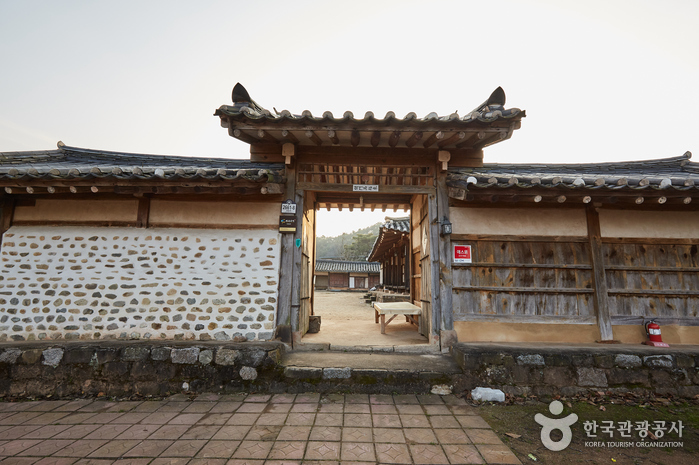
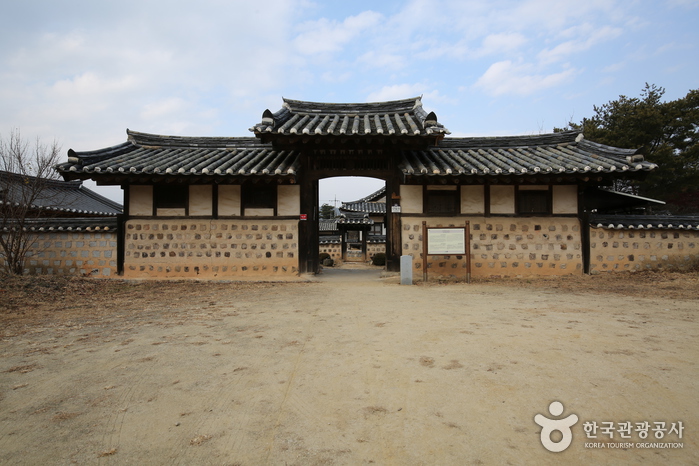
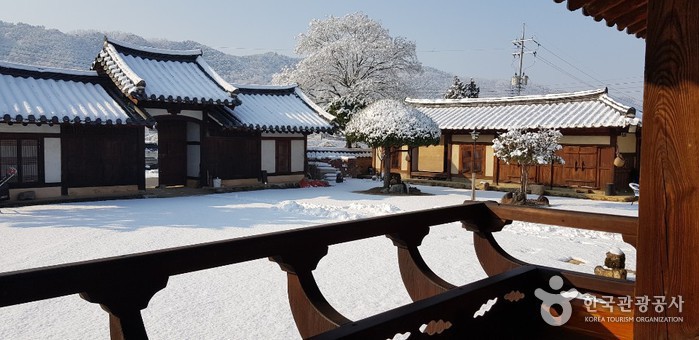
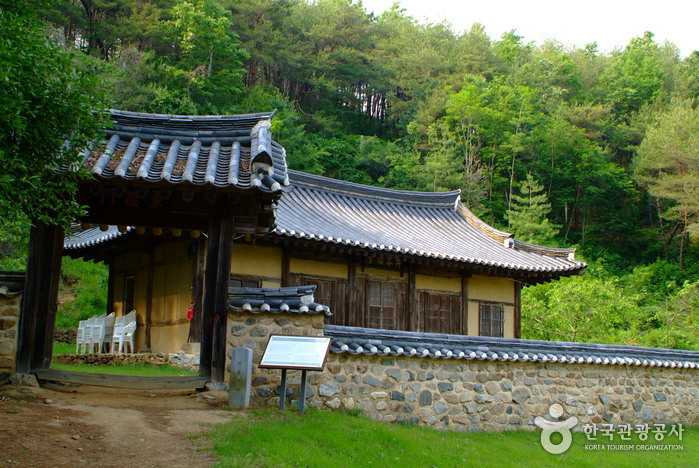

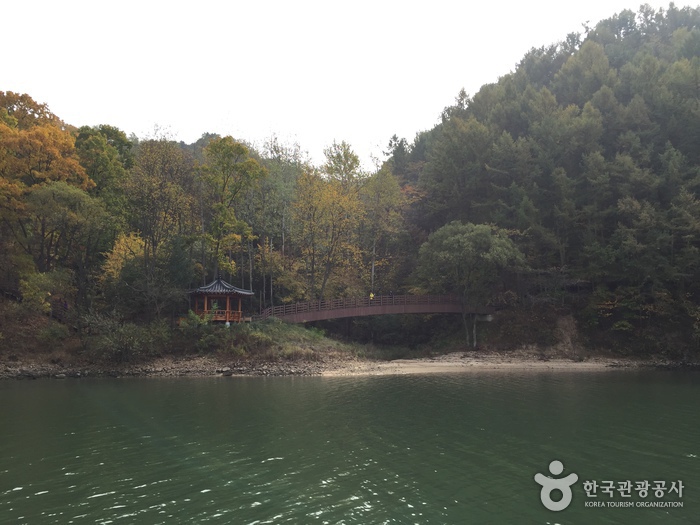
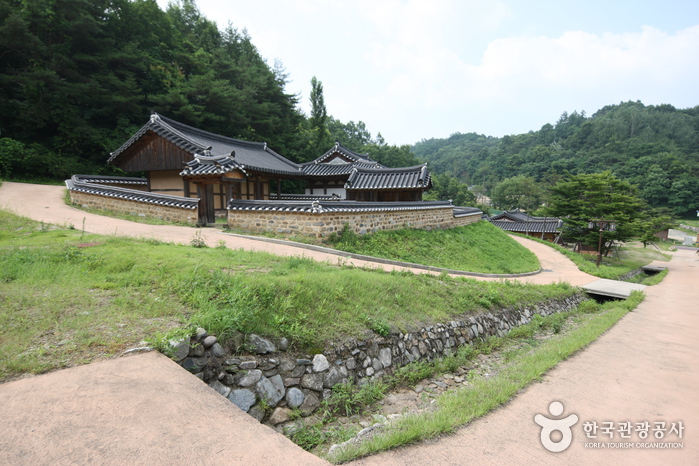
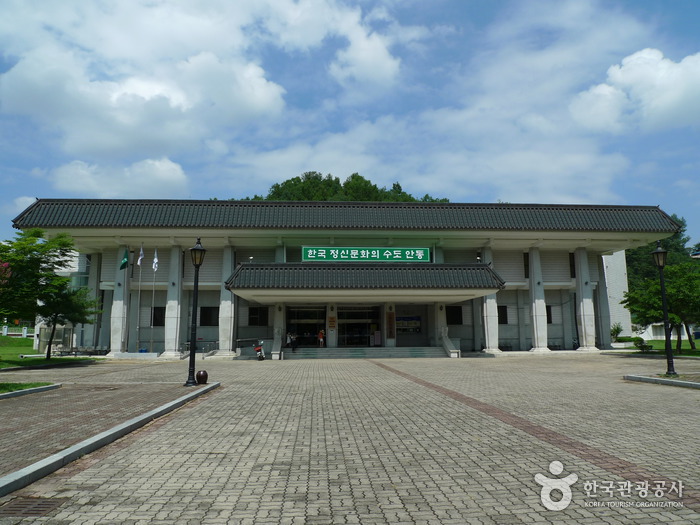
 Français
Français
 한국어
한국어 English
English 日本語
日本語 中文(简体)
中文(简体) Deutsch
Deutsch Español
Español Русский
Русский